#RetailAnalytics
Explore tagged Tumblr posts
Text
AI Powered Solutions for Retail - Xpandretail
At Xpandretail, we bring decades of experience delivering innovative analytics solutions that empower retailers to understand customer behavior like never before. Our state-of-the-art system is designed to capture every nuance of your store’s activity, helping you optimize operations and drive growth.
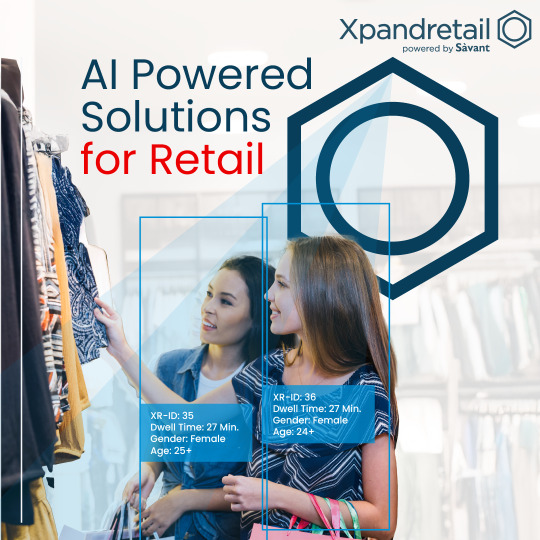
#RetailAnalytics#SmartRetail#CustomerData#Xpandretail#AI#PeopleCounting#RetailTechnology#BoostYourBusiness#CustomerInsights#RetailIndustryTrends#PeopleCountingSolutions#Gulf#UAE#Kuwait#Bahrain#Oman#Qatar#KSA
5 notes
·
View notes
Link
0 notes
Text
Unlock the Secret to Smarter Online Sales with Predictive Analytics in Ecommerce
In the ever-competitive ecommerce world, staying ahead means knowing what your customers want, before they even ask. That’s the power of predictive analytics in ecommerce.
This blog breaks down how top brands are using predictive models to: 🔍 Understand buying behavior and personalize experiences 📦 Optimize inventory and manage supply chains 📊 Forecast trends and boost customer retention
Whether you’re a digital retailer, ecommerce strategist, or product head, this read offers practical insights to turn data into profits and browsers into buyers.
#PredictiveAnalyticsInEcommerce#EcommerceGrowth#DataDrivenRetail#CustomerInsights#SmartCommerce#SalesForecasting#BusinessIntelligence#KodyTechnolab#RetailAnalytics#EcommerceOptimization#AIInEcommerce#DigitalRetailStrategy#DataScienceInEcommerce#TechForRetail
0 notes
Text
Next.co.uk Product Pricing Scraping

Next.co.uk Product Pricing Scraping
Unlock Competitive Insights with Next.co.uk Product Pricing Scraping by DataScrapingServices.com.
In the ever-evolving world of eCommerce, staying competitive requires access to real-time pricing data. Next.co.uk Product Pricing Scraping offered by DataScrapingServices.com empowers businesses with actionable insights by extracting accurate product pricing data from one of the UK’s leading retail websites. Whether you're an online retailer, pricing analyst, or market researcher, this service is a game-changer for staying ahead of the competition.
Key Data Fields Extracted
Our scraping solution delivers a wealth of essential data, including:
- Product Name
- Product Categories
- Prices (Regular and Discounted)
- Product Descriptions
- Stock Availability
- Customer Reviews and Ratings
- SKU Numbers
- Image URLs
Benefits of Next.co.uk Product Pricing Scraping
1. Real-Time Market Intelligence
Gain instant access to updated pricing and product details. Stay informed about market trends and competitor strategies, enabling timely and informed decision-making.
2. Optimize Pricing Strategies
Analyze competitor pricing trends to adjust your prices dynamically, ensuring competitiveness while maximizing profits.
3. Efficient Inventory Management
Monitor stock availability and product trends on Next.co.uk to identify popular items and manage your inventory more effectively.
4. Enhanced Product Offerings
Understand customer preferences by reviewing product descriptions, ratings, and reviews. Use these insights to refine your own product offerings and improve customer satisfaction.
5. Boost Marketing Campaigns
Incorporate pricing data into targeted promotional campaigns. Highlight competitive advantages and offer timely discounts based on market insights.
6. Save Time and Resources
Automate the data collection process and eliminate the need for manual monitoring. This allows your team to focus on analyzing data rather than gathering it.
Best Data Scraping Services Provider
Extracting Product Details from Kogan
Tesco Product Prices Extraction
Lazada.com Product Prices Extraction
Amazon.ca Product Details Extraction
eBay.ca Product Information Extraction
Costco.ca Product Data Extraction
G2 Product Details Extraction
Target Product Prices Extraction
Etsy.com Product Details Extraction
Walmart Product Price Data Extraction
Best Next.co.uk Product Pricing Scraping:
Newcastle upon Tyne, Glasgow, Liverpool, Wolverhampton, Portsmouth, Birmingham, Dudley, Preston, Derby, Leicester, Brighton, Manchester, London, Southampton, Edinburgh, Hull, Sheffield, Bristol, Cardiff, Belfast, Northampton, Coventry, Plymouth, Nottingham, Leeds, Stoke-on-Trent, Luton, Swansea, Aberdeen and Southampton.
Conclusion
Data is the lifeblood of eCommerce success, and Next.co.uk Product Pricing Scraping is your gateway to staying ahead in the competitive retail landscape. By leveraging this service, businesses can gain a significant edge in pricing strategies, inventory management, and customer engagement.
At DataScrapingServices.com, we prioritize accuracy, efficiency, and compliance, delivering tailored solutions to meet your specific business needs.
📩 Get started today by reaching out to [email protected].
#ecommercedatascraping#nextukscraping#productpricinginsights#datadrivendecisions#retailanalytics#datascrapingservices#marketintelligence#competitiveedge
0 notes
Text
Is Inefficient Inventory Holding Back Your Retail Growth?
Struggling with overstock headaches and out-of-stock chaos? One retail leader turned inventory confusion into clarity using GetOnData’s smart analytics. Because when data drives every decision, impact follows.
0 notes
Text
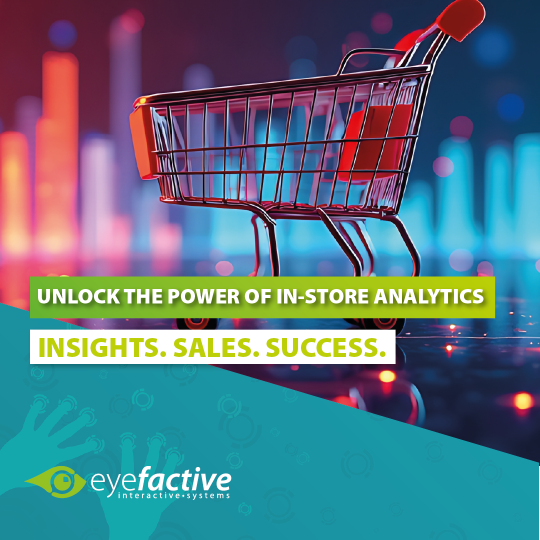
Retail Analytics als Game-Changer!Lange galt der Onlinehandel als datengetriebener Vorreiter – doch mit smarten In-Store Analytics können stationäre Einzelhändler nun aufholen! Neue Technologien wie Beacons, Kamera-Tracking, virtuelle Regale und digitale Touchpoints liefern endlich präzise Daten direkt vom POS.
✨ Highlights aus dem Whitepaper:
✅ Verhaltensdaten in Echtzeit durch Beacons & Kameras
✅ Kaufinteressen direkt am Touchpoint messen
✅ Personalisierte Aktionen durch gezielte Segmentierung
✅ Optimierte Preisstrategien & Warenplatzierung
✅ Mehr Umsatz und bessere Kundenbindung dank fundierter Entscheidungen
📈 84 % der Einzelhandelsumsätze finden immer noch im stationären Handel statt – höchste Zeit, dieses Potenzial mit smarten Daten zu entfesseln!
Mehr dazu im neuen Whitepaper über In-Store Analytics: https://www.eyefactive.com/whitepaper/in-store-retail-analytics-einzelhandel
#RetailAnalytics#Analytics#keywork#Dataanalytics#interactiveretaill#smartretail#retailsignage#retailtech#retailtechnologies#objectrecognition#touchscreen#touchsoftware#touchtable#touchtables#InteractiveTouchscreen#PCAPTouchscreen#InteractiveSignage#InnovativeDisplays#InteractiveSoftware#digitalsignage#touch#multitouch#multiuser#touchapps#multitouchsoftware#touchscreensoftware#touchscreenapps#retailsoftware#kiosksoftware#digitalmarketing
0 notes
Text
Why Quick Commerce Scraping API Is Key to Maximizing Profits in 2025?

Introduction
Quick commerce businesses encounter significant challenges and opportunities in the fast-paced digital marketplace. With consumer preferences shifting rapidly, pricing dynamics evolving, and competition intensifying, staying ahead requires a data-driven approach that adapts to real-time market changes. As we move through 2025, one solution has emerged as a key driver of sustained growth: the Quick Commerce Scraping API. This advanced tool is revolutionizing how businesses collect market intelligence, refine pricing strategies, and enhance profitability in the quick commerce sector.
Understanding the Quick Commerce Revolution
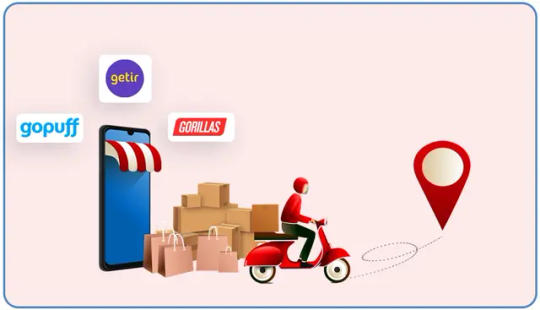
The quick commerce industry—defined by ultra-fast delivery windows of 10-30 minutes—has dramatically reshaped consumer expectations across retail sectors. Pioneered by industry leaders like Gopuff, Getir, and Gorillas, this market has experienced rapid expansion, with projections estimating it will reach $72.1 billion by 2025.
As competition heats, businesses increasingly seek innovative strategies to secure a competitive advantage. This is where data becomes the ultimate game-changer. The ability to gather, analyze, and leverage real-time market data is critical for Maximize Quick Commerce Profits and staying ahead in an ever-evolving landscape.
The Growing Data Challenge in Quick Commerce

Quick commerce thrives on ultra-fast decision-making and operates within razor-thin margins. To stay competitive, businesses must navigate several key challenges:
Real-time pricing intelligence: Prices fluctuate multiple times a day across various competitors, requiring constant monitoring to maintain a competitive edge.
Product availability tracking: Inventory levels are highly dynamic, and stockouts or restocks can significantly impact sales and customer satisfaction.
Promotional activity monitoring: Flash sales, exclusive discounts, and limited-time offers demand immediate tracking and response to capitalize on market opportunities.
Consumer behavior insights: Understanding rapid shifts in shopping trends and preferences is crucial for personalization and demand forecasting.
Operational efficiency metrics: Effective delivery logistics, inventory flow, and staffing management ensure cost optimization and seamless fulfillment.
By leveraging a Quick Commerce Scraping API, businesses can streamline their market intelligence efforts and gain access to crucial data points that drive competitive pricing, product assortment strategies, and consumer behavior analysis.
What Is a Quick Commerce Scraping API?
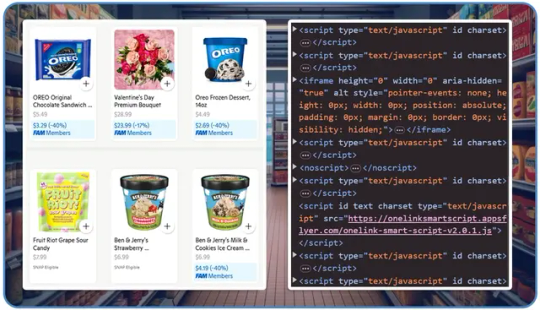
A Quick Commerce Scraping API is a powerful automated tool that allows businesses to seamlessly collect and analyze vast amounts of market data from various online sources.
This API efficiently gathers structured data from competitor websites, e-commerce platforms, marketplaces, and even social media channels, providing businesses with real-time insights without the burden of manual data collection.
By leveraging a Quick Commerce Scraping API, businesses can streamline their market intelligence efforts and gain access to crucial data points that drive competitive pricing, product assortment strategies, and consumer behavior analysis.
Key Benefits of a Quick Commerce Data API

Automated data extraction from thousands of online sources ensures comprehensive market trend coverage.
Structured and analysis-ready data outputs, eliminating the need for additional data processing.
Real-time or scheduled data collection lets businesses stay updated with the latest market changes.
Advanced anti-scraping bypass mechanisms, utilizing sophisticated proxy networks to ensure uninterrupted data access.
Compliance with legal and ethical data standards, ensuring responsible and secure data collection practices.
Seamless integration with business intelligence tools enables businesses to effortlessly transform raw data into actionable insights.
By integrating a Quick Commerce Scraping API, companies can unlock deeper market visibility, optimize pricing strategies, and enhance overall business decision-making.
Strategic Applications of Scraping APIs in Quick Commerce

In the fast-paced world of quick commerce, staying ahead requires real-time data insights to optimize pricing, inventory, competitive positioning, marketing, and supply chain operations. Scraping APIs is a powerful tool that enables businesses to make data-driven decisions that enhance profitability and efficiency.
1. Dynamic Pricing Optimization
Price competitiveness in quick commerce is crucial, as consumers frequently compare prices before purchasing. Leveraging a Scraping API For E-Commerce Growth, businesses can track real-time competitor pricing and refine their pricing strategies accordingly.
Case Study: A leading quick grocery delivery platform used scraping API technology to implement dynamic pricing. By adjusting prices based on competitor data, they maintained a competitive edge on high-visibility products while maximizing margins on less price-sensitive items—leading to an 18% profitability boost within three months.
2. Inventory and Assortment Planning
To remain competitive, quick commerce businesses must constantly fine-tune their product mix in response to market trends and consumer demand.
Data Scraping For Quick Commerce Businesses provides actionable insights into:
Trending products across competitor platforms.
Category performance metrics.
Seasonal demand fluctuations.
Stock availability patterns.
Emerging product introductions.
By leveraging these insights, businesses can make informed decisions on inventory investments, discontinue underperforming products, and prioritize new product launches.
3. Competitive Intelligence and Market Positioning
Gaining an in-depth understanding of market trends and competitor movements is essential for strategic planning by:
Track competitor expansion into new geographical areas.
Monitor delivery time variations and service enhancements.
Analyze promotional strategies and marketing messages.
Identify emerging competitors and disruptive market entrants.
Aggregate customer reviews to gauge sentiment.
These insights enable businesses to anticipate competitive shifts and proactively refine their market strategies rather than merely reacting to industry changes.
4. Marketing and Promotional Effectiveness
Promotions are critical in quick commerce, driving customer acquisition and repeat purchases.
Quick Commerce Insights With Scraping API technologies allow businesses to:
Monitor competitor promotional campaigns.
Evaluate the effectiveness of various promotional structures.
Determine the best timing for promotions.
Measure promotional impact across different customer demographics.
Optimize marketing spending through ROI-driven insights.
By leveraging data-driven promotional strategies, businesses can attract and retain customers more effectively while minimizing unnecessary price wars.
5. Supply Chain Optimization
Efficient supply chain management is critical for Profit Optimization Through Scraping APIs. By analyzing competitor product availability, delivery times, and geographical coverage, businesses can:
This enables businesses to:
Identify ideal locations for dark stores and micro-fulfillment centers.
Maintain optimal inventory levels across product categories.
Strengthen supplier relationships based on demand and performance data.
Minimize stockouts and overstock situations.
Enhance logistics planning and improve delivery efficiency.
By refining supply chain operations, businesses can reduce costs while improving service quality—which is essential to maintaining a competitive edge in quick commerce.
How to Implement a Quick Commerce Scraping Strategy?

Implementing a Quick Commerce Scraping API effectively requires a structured approach to ensure valuable insights and actionable outcomes. By following a strategic plan, businesses can maximize the potential of data scraping for competitive advantage.
Identify Key Data Points and Sources
Select the Right API Partner
Establish Data Analysis Frameworks
Create Action Protocols
Measure ROI and Refine Your Approach
Legal and Ethical Considerations
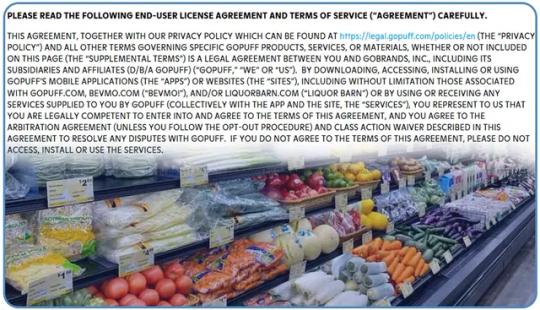
Adhering to legal and ethical standards is essential when integrating data scraping for Quick Commerce businesses to ensure compliance and responsible data usage.
Here’s how businesses can maintain best practices:
Respect Terms of Service: Always ensure that your scraping activities align with website terms of service to avoid potential legal complications.
Manage Server Load: Implement request throttling and efficient crawling techniques to prevent target websites from overloading and ensure sustainable data extraction.
Handle Personal Data Responsibly: Adhere to GDPR, CCPA, and other privacy regulations, ensuring that user data is managed in a compliant and secure manner.
Use Data Ethically: Leverage insights for aggregate market intelligence rather than identifying or targeting specific individuals, maintaining ethical data practices.
Maintain Transparency: Communicate your data collection practices to customers and partners to build trust and ensure compliance.
Partnering with reputable API providers can help businesses navigate legal complexities, reduce risks, and ensure data collection remains within regulatory boundaries.
Future Trends in Quick Commerce Data Intelligence

As we progress through 2024-25, several transformative trends are set to reshape how businesses leverage Quick Commerce Scraping API solutions to maintain a competitive edge:
AI-Powered Analysis: Machine learning will extend beyond data extraction, enabling automated analysis that translates scraped data into meaningful, actionable business insights rather than just raw numbers.
Predictive Capabilities: Advanced scraping systems will provide real-time market data and forecast competitor strategies and industry shifts, allowing businesses to stay proactive.
Integration with IoT: By merging scraped online data with real-time inputs from in-store sensors and connected devices, businesses can gain a more comprehensive view of market dynamics.
Hyper-Personalization: Leveraging collected data, businesses can enhance customer experiences with tailored recommendations, fostering greater engagement, loyalty, and retention.
Cross-Platform Intelligence: APIs will evolve to track data across emerging sales channels—including social commerce and voice commerce—ensuring a well-rounded market analysis.
Businesses that embrace these trends and invest in sophisticated data intelligence will be best positioned to Maximize Quick Commerce Profits in the evolving digital landscape.
How Web Data Crawler Can Help You?

We lead the way in quick commerce data solutions, providing specialized API services tailored to the unique demands of the quick commerce industry. Our platform empowers businesses to develop quick commerce profit strategies through advanced data collection and analysis.
With us, you gain access to:
Custom-built APIs designed for quick commerce data needs.
Advanced proxy networks for seamless and reliable data extraction.
AI-powered data cleaning and normalization for accurate insights.
Real-time competitive intelligence dashboards to track market trends.
Seamless integration with significant business intelligence platforms.
A compliance-focused approach to ethical data collection.
Dedicated support from quick commerce data specialists.
Our solutions have driven success for quick commerce businesses across various sectors, enhancing pricing optimization, inventory management, and competitive positioning.
By leveraging Quick Commerce Insights With Scraping API technology, clients typically achieve 15-25% profit improvements within just six months of implementation.
Conclusion
In the fast-paced, quick commerce industry, data-driven decision-making is crucial for success. A Quick Commerce Scraping API empowers businesses with actionable pricing, inventory, marketing, and operations insights.
Explore how our tailored solutions can enhance your market intelligence. Our experts analyze your challenges and craft custom data solutions to sharpen your competitive edge.
Contact Web Data Crawler today to see how our Quick Commerce Scraping API can fuel your growth in 2025. Stay ahead in the data intelligence race—turn market data into your competitive advantage!
Originally published at https://www.webdatacrawler.com.
#QuickCommerce#EcommerceData#WebScraping#DataIntelligence#MarketTrends#CompetitiveAnalysis#DynamicPricing#RetailTech#AIData#BigData#BusinessGrowth#PriceMonitoring#DataDriven#RetailAnalytics#APIIntegration#DataScraping#QuickCommerceAPI#WebDataCrawler#EcommerceInsights#SmartPricing#SupplyChainOptimization
0 notes
Text

Streamline Your Multi-Store Supermarket Operations with Cloud-Based POS Software
Managing multiple supermarket locations? Our latest blog reveals how cloud-based POS billing software centralizes operations, optimizes inventory, and boosts customer loyalty across all your stores. Learn why modern supermarket chains are switching to integrated management systems for real-time reporting, automated stock tracking, and enhanced security. Discover when to upgrade your system and how it benefits owners, managers, and staff alike. Read our comprehensive guide to selecting the right supermarket management software for long-term scalability and profitability.
#SupermarketPOS#RetailManagement#InventoryOptimization#MultiStoreManagement#CloudBasedPOS#SupermarketSoftware#RetailTechnology#POSSystems#SupermarketOperations#BusinessScalability#RetailAutomation#InventoryManagement#CustomerLoyalty#RetailAnalytics#DataDrivenRetail
0 notes
Text
Predictive Modeling and Analytics: A Practical Guide to Smarter Decision-Making
Introduction
Imagine if you could predict the future with remarkable accuracy—anticipating customer trends, optimizing business strategies, or even preventing potential failures before they happen. Sounds like magic, right? Well, it’s not. This is the power of predictive modeling and analytics, a game-changing approach that helps businesses make data-driven decisions with confidence.
From Netflix recommending your next binge-worthy show to banks detecting fraudulent transactions, predictive modeling is already shaping the world around us. But how can you harness it effectively for your business or industry?
In this guide, we’ll break down predictive modeling and analytics in an easy-to-understand way, providing real-world applications, actionable steps, and solutions to help you implement it successfully. Whether you’re a business leader, a data scientist, or someone simply curious about how predictions work, this post will equip you with everything you need to get started.
1. What is Predictive Modeling and Analytics?
At its core, predictive modeling and analytics is the process of using historical data, statistical algorithms, and machine learning techniques to predict future outcomes.
Key Components of Predictive Analytics:
Data Collection – Gathering historical and real-time data from various sources.
Data Cleaning & Preparation – Ensuring data is accurate and structured for analysis.
Feature Selection – Identifying the most relevant variables that influence predictions.
Model Training & Testing – Using machine learning or statistical methods to build predictive models.
Model Deployment & Monitoring – Applying the model in real-world scenarios and refining it over time.
💡 Example: A retail company analyzes past sales data to predict customer demand for upcoming months, allowing them to optimize inventory and prevent stock shortages.
2. Why Predictive Modeling and Analytics Matter Today
With the explosion of big data, businesses that fail to adopt predictive analytics risk falling behind their competitors. Here’s why:
🔹 Improves Decision-Making
Predictive analytics removes guesswork by providing data-backed insights, leading to smarter and more efficient decisions.
💡 Example: Healthcare providers use predictive models to anticipate patient readmissions, allowing for proactive interventions and better patient care.
🔹 Enhances Customer Experience
By understanding customer behavior, businesses can personalize interactions and improve satisfaction.
💡 Example: E-commerce platforms use predictive models to recommend products based on past purchases and browsing history, increasing sales and engagement.
🔹 Reduces Risks and Fraud
Financial institutions rely on predictive analytics to detect anomalies and flag suspicious activities in real-time.
💡 Example: Credit card companies use predictive modeling to identify fraudulent transactions before they cause damage, protecting both the company and the customer.
3. How to Build a Predictive Model (Step-by-Step Guide)
Now that we understand the importance of predictive modeling and analytics, let’s dive into the step-by-step process of building a predictive model.
Step 1: Define Your Goal
Before diving into data, you need to clearly define what you want to predict.
✔ Ask Yourself:
Are you trying to forecast sales, detect fraud, or predict customer churn?
What business problem are you solving?
💡 Example: A telecom company wants to predict which customers are likely to cancel their subscription in the next 3 months.
Step 2: Gather and Prepare Data
The success of your predictive model depends on the quality of your data.
✔ Best Practices:
Collect historical data related to your goal.
Clean the data to remove duplicates, fill in missing values, and fix errors.
Choose relevant features that impact the prediction.
💡 Example: If predicting customer churn, useful data points may include customer service interactions, past purchases, and subscription renewal history.
Step 3: Choose the Right Algorithm
Different machine learning techniques can be used for predictive modeling.
✔ Popular Algorithms:
Linear Regression (For predicting continuous values like sales revenue)
Decision Trees & Random Forest (For classifying data, such as fraud detection)
Neural Networks (For complex patterns like image or speech recognition)
💡 Example: A bank predicting loan defaults might use a logistic regression model to classify borrowers as "low-risk" or "high-risk."
Step 4: Train and Test Your Model
To ensure accuracy, split your data into training (80%) and testing (20%) sets.
✔ Tips:
Train your model using historical data.
Test its accuracy on unseen data to measure performance.
Adjust parameters to improve model efficiency.
💡 Example: An airline uses past flight delay data to train a model that predicts the likelihood of future delays, helping passengers plan accordingly.
Step 5: Deploy and Monitor Your Model
Once your model is ready, integrate it into your business operations and continuously monitor its performance.
✔ Why Monitoring is Essential?
Data patterns change over time (concept drift).
Models need adjustments and retraining to maintain accuracy.
💡 Example: An online streaming service deploys a predictive model to recommend personalized content but updates it regularly based on changing viewing habits.
4. Common Challenges in Predictive Modeling (and How to Overcome Them)
Even with the best intentions, predictive modeling isn’t always smooth sailing. Here’s how to tackle common issues:
🔹 Challenge 1: Poor Data Quality
Solution: Conduct thorough data cleaning, fill in missing values, and use reliable data sources.
💡 Example: A hospital ensuring accurate patient data avoids biased predictions in disease diagnosis models.
🔹 Challenge 2: Model Overfitting
Solution: Use cross-validation techniques and simplify models by removing unnecessary variables.
💡 Example: A stock market prediction model should focus on relevant economic indicators rather than unrelated factors.
🔹 Challenge 3: Lack of Interpretability
Solution: Use explainable AI techniques like SHAP values to understand how a model makes decisions.
💡 Example: A bank using AI for credit approvals should provide clear reasoning behind rejections.
Conclusion: The Future of Predictive Modeling and Analytics
Predictive modeling and analytics are no longer optional—they are a necessity for businesses that want to stay ahead. From enhancing customer experiences to reducing risks and improving efficiency, the benefits are undeniable.
By following the step-by-step guide outlined in this post, you can start applying predictive analytics to drive better business outcomes.
✔ Key Takeaways: ✅ Predictive modeling helps businesses make smarter, data-driven decisions. ✅ A structured approach (goal setting, data collection, model training) is crucial for success. ✅ Continuous monitoring ensures model accuracy over time.
🔹 Your Next Step: Want to leverage predictive analytics for your business? Start by analyzing your existing data and defining a clear prediction goal.
#PredictiveModeling#PredictiveAnalytics#MachineLearning#ArtificialIntelligence#BigData#DataScience#BusinessIntelligence#DataDrivenDecisionMaking#AIForBusiness#DataAnalytics#FutureOfData#AITrends#DataStrategy#TechInnovation#SmartDecisions#FinancialAnalytics#HealthcareAI#RetailAnalytics#FraudDetection#CustomerInsights
0 notes
Text
🚀 𝗧𝗿𝗮𝗻𝘀𝗳𝗼𝗿𝗺𝗶𝗻𝗴 𝗕𝘂𝘀𝗶𝗻𝗲𝘀𝘀 𝗧𝗿𝗮𝗻𝘀𝗮𝗰𝘁𝗶𝗼𝗻𝘀: 𝗧𝗵𝗲 𝗗𝗶𝗴𝗶𝘁𝗮𝗹 𝗦𝗶𝗴𝗻𝗮𝘁𝘂𝗿𝗲 𝗥𝗲𝘃𝗼𝗹𝘂𝘁𝗶𝗼𝗻 📄✍️ IndustryARC™
Digital Signature Market Size is forecast to reach $44700 Million by 2030, at a CAGR of 35.20% during forecast period 2024-2030.
𝐃𝐨𝐰𝐧𝐥𝐨𝐚𝐝 𝐑𝐞𝐩𝐨𝐫𝐭 𝐒𝐚𝐦𝐩𝐥𝐞: 👉 https://lnkd.in/gVZvAhcc
In a world driven by efficiency and security, digital signatures have emerged as a game-changer for businesses worldwide. 🌍 From reducing paperwork to ensuring compliance, their benefits are undeniable:
𝐊𝐞𝐲 𝐓𝐫𝐞𝐧𝐝𝐬:
🌩️📃Rising #Adoption of Cloud-Based Solutions
#Cloud-based digital signature platforms are becoming increasingly popular due to their scalability, cost-effectiveness, and seamless integration with business tools. These solutions empower organizations to streamline workflows, enhance security, and support remote operations efficiently.
🔒✅ 𝗙𝗼𝗰𝘂𝘀 𝗼𝗻 𝗘𝗻𝗵𝗮𝗻𝗰𝗲𝗱 𝗦𝗲𝗰𝘂𝗿𝗶𝘁𝘆 𝗮𝗻𝗱 𝗖𝗼𝗺𝗽𝗹𝗶𝗮𝗻𝗰𝗲.
With #growing concerns around data breaches, digital signature providers are integrating advanced encryption, multi-factor authentication, and #blockchain technology to ensure airtight security. This shift also aligns with strict compliance standards like GDPR and eIDAS.
📚 𝗘𝘅𝗽𝗮𝗻𝗱𝗶𝗻𝗴 𝗨𝘀𝗲 𝗶𝗻 𝗗𝗶𝘃𝗲𝗿𝘀𝗲 𝗜𝗻𝗱𝘂𝘀𝘁𝗿𝗶𝗲𝘀
Digital #signatures are no longer confined to legal or financial sectors. Industries like healthcare, real estate, and #education are leveraging them for faster documentation, eco-friendly practices, and improved operational efficiency.
𝐆𝐞𝐭 𝐦𝐨𝐫𝐞 𝐢𝐧𝐟𝐨: https://lnkd.in/gMA94FDQ
𝐊𝐞𝐲 𝐏𝐥𝐚𝐲𝐞𝐫𝐬: Adobe | Docusign | Thales| DigiCert | Zoho | Ascertia – An InfoCert Company | GlobalSign |Nitro | Fujitsu | Panasonic| Crispin Corporation, A Sony Group Company | Sumitomo Corporation |NEC Corporation | Reliance Industries Limited| Tata Consultancy Services | Foxconn | Samsung Electronics | Toyota Motor Corporation |
✨ (𝐂𝐫𝐞𝐝𝐢𝐭 𝐂𝐚𝐫𝐝 𝐃𝐢𝐬𝐜𝐨𝐮𝐧𝐭 𝐨𝐟 𝟏𝟎𝟎𝟎$ 𝐨𝐧 𝐚𝐥𝐥 𝐑𝐞𝐩𝐨𝐫𝐭 𝐏𝐮𝐫𝐜𝐡𝐚𝐬𝐞𝐬 | 𝐔𝐬𝐞 𝐂𝐨𝐝𝐞: 𝐅𝐋𝐀𝐓𝟏𝟎𝟎𝟎 𝐚𝐭 𝐜𝐡𝐞𝐜𝐤𝐨𝐮𝐭) https://lnkd.in/gsK4ndqS

#RetailAnalytics#DataScience#BusinessIntelligence#MachineLearning#AI#PredictiveAnalytics#BigData#DataDriven#DigitalTransformation#Retail
0 notes
Text
How Ai2sql Empowers Business Analysts to Access Data Without Coding

Business analysts often need to access data for reporting and decision-making, but not all analysts have the technical skills required to write SQL queries. Ai2sql provides a solution by enabling analysts to generate SQL queries using natural language, making data access faster and more intuitive.
Problem Statement: Accessing data from databases often requires knowledge of SQL, which can be a barrier for business analysts who need quick insights. Relying on developers to write queries can lead to delays in data retrieval and decision-making.
Application: Ai2sql allows business analysts to simply describe their data requirements in natural language, such as "show total sales by product for the last quarter." The tool then converts this request into an SQL query that can be run against the database. This makes it easy for analysts to access the data they need without relying on technical assistance.
Outcome: By using Ai2sql, business analysts can retrieve data independently, leading to faster insights and better decision-making. The ability to generate SQL queries without coding also helps bridge the gap between business and technical teams.
Industry Examples:
Retail Analytics: Retail analysts use Ai2sql to generate reports on sales trends, inventory levels, and customer behavior, enabling data-driven decision-making.
Financial Services: Financial analysts use the tool to access transaction data and generate custom reports for financial analysis and forecasting.
Healthcare: Healthcare analysts use Ai2sql to query patient data, helping healthcare providers make informed decisions based on data insights.
Additional Scenarios: Ai2sql can also be used by small business owners to create sales and inventory reports, by educators to analyze student performance data, and by marketers for campaign performance analysis
Discover how Ai2sql can help you access the data you need without coding. Get started today at aiwikiweb.com/product/ai2sql/
#DataAnalysis#Ai2sql#SQLAutomation#BusinessIntelligence#DataAccess#SQL#NaturalLanguageProcessing#RetailAnalytics#FinancialServices#DataInsights
0 notes
Text
Geospatial Analysis In Market Research: Mapping Consumer Trends

Discover how geospatial analysis is revolutionizing market research. Explore how to leverage location data to uncover consumer trends, understand market dynamics, and make data-driven decisions. Learn about the latest advancements in geospatial technology and its applications in various industries.
Link : https://maction.com/geospatial-analysis-in-market-research-mapping-consumer-trends/
#geospatialanalysis#marketresearch#consumertrends#locationdata#datadrivenmarketing#spatialanalytics#geographicinformationsystems(GIS)#mapping#consumerbehavior#marketsegmentation#siteselection#competitiveanalysis#customerjourneymapping#locationintelligence#spatialstatistics#bigdata#retailanalytics#urbanplanning
0 notes
Text
Next.co.uk Product Pricing Scraping

Next.co.uk Product Pricing Scraping
Unlock Competitive Insights with Next.co.uk Product Pricing Scraping by DataScrapingServices.com.
In the ever-evolving world of eCommerce, staying competitive requires access to real-time pricing data. Next.co.uk Product Pricing Scraping offered by DataScrapingServices.com empowers businesses with actionable insights by extracting accurate product pricing data from one of the UK’s leading retail websites. Whether you're an online retailer, pricing analyst, or market researcher, this service is a game-changer for staying ahead of the competition.
Key Data Fields Extracted
Our scraping solution delivers a wealth of essential data, including:
- Product Name
- Product Categories
- Prices (Regular and Discounted)
- Product Descriptions
- Stock Availability
- Customer Reviews and Ratings
- SKU Numbers
- Image URLs
Benefits of Next.co.uk Product Pricing Scraping
1. Real-Time Market Intelligence
Gain instant access to updated pricing and product details. Stay informed about market trends and competitor strategies, enabling timely and informed decision-making.
2. Optimize Pricing Strategies
Analyze competitor pricing trends to adjust your prices dynamically, ensuring competitiveness while maximizing profits.
3. Efficient Inventory Management
Monitor stock availability and product trends on Next.co.uk to identify popular items and manage your inventory more effectively.
4. Enhanced Product Offerings
Understand customer preferences by reviewing product descriptions, ratings, and reviews. Use these insights to refine your own product offerings and improve customer satisfaction.
5. Boost Marketing Campaigns
Incorporate pricing data into targeted promotional campaigns. Highlight competitive advantages and offer timely discounts based on market insights.
6. Save Time and Resources
Automate the data collection process and eliminate the need for manual monitoring. This allows your team to focus on analyzing data rather than gathering it.
Best Data Scraping Services Provider
Extracting Product Details from Kogan
Tesco Product Prices Extraction
Lazada.com Product Prices Extraction
Amazon.ca Product Details Extraction
eBay.ca Product Information Extraction
Costco.ca Product Data Extraction
G2 Product Details Extraction
Target Product Prices Extraction
Etsy.com Product Details Extraction
Walmart Product Price Data Extraction
Best Next.co.uk Product Pricing Scraping:
Newcastle upon Tyne, Glasgow, Liverpool, Wolverhampton, Portsmouth, Birmingham, Dudley, Preston, Derby, Leicester, Brighton, Manchester, London, Southampton, Edinburgh, Hull, Sheffield, Bristol, Cardiff, Belfast, Northampton, Coventry, Plymouth, Nottingham, Leeds, Stoke-on-Trent, Luton, Swansea, Aberdeen and Southampton.
Conclusion
Data is the lifeblood of eCommerce success, and Next.co.uk Product Pricing Scraping is your gateway to staying ahead in the competitive retail landscape. By leveraging this service, businesses can gain a significant edge in pricing strategies, inventory management, and customer engagement.
At DataScrapingServices.com, we prioritize accuracy, efficiency, and compliance, delivering tailored solutions to meet your specific business needs.
📩 Get started today by reaching out to [email protected].
#ecommercedatascraping#nextukscraping#productpricinginsights#datadrivendecisions#retailanalytics#datascrapingservices#marketintelligence#competitiveedge
0 notes
Text
#xequalto#DataModeling#RetailAnalytics#BusinessIntelligence#DataDrivenDecisionMaking#RetailSuccess#DataAnalysis#ProjectManagement#DataScience#RetailLoyaltyProgram#BI
0 notes
Photo

Discover the inspiring success stories of our data science alumni who are transforming industries and shaping the future. From healthcare to finance, learn how our graduates are making a difference with their innovative solutions.
0 notes
Text
#ERPNext#RetailBusiness#SigzenTechnologies#InventoryManagement#RetailSolutions#PointOfSale#CustomerRelationshipManagement#OrderManagement#MultiChannelRetailing#FinancialManagement#RetailAnalytics#SupplierManagement#EmployeeManagement#CustomizableDashboards#BusinessGrowth#RetailEfficiency#RetailTechnology#ERPSoftware#RetailTransformation#RetailInnovation
1 note
·
View note